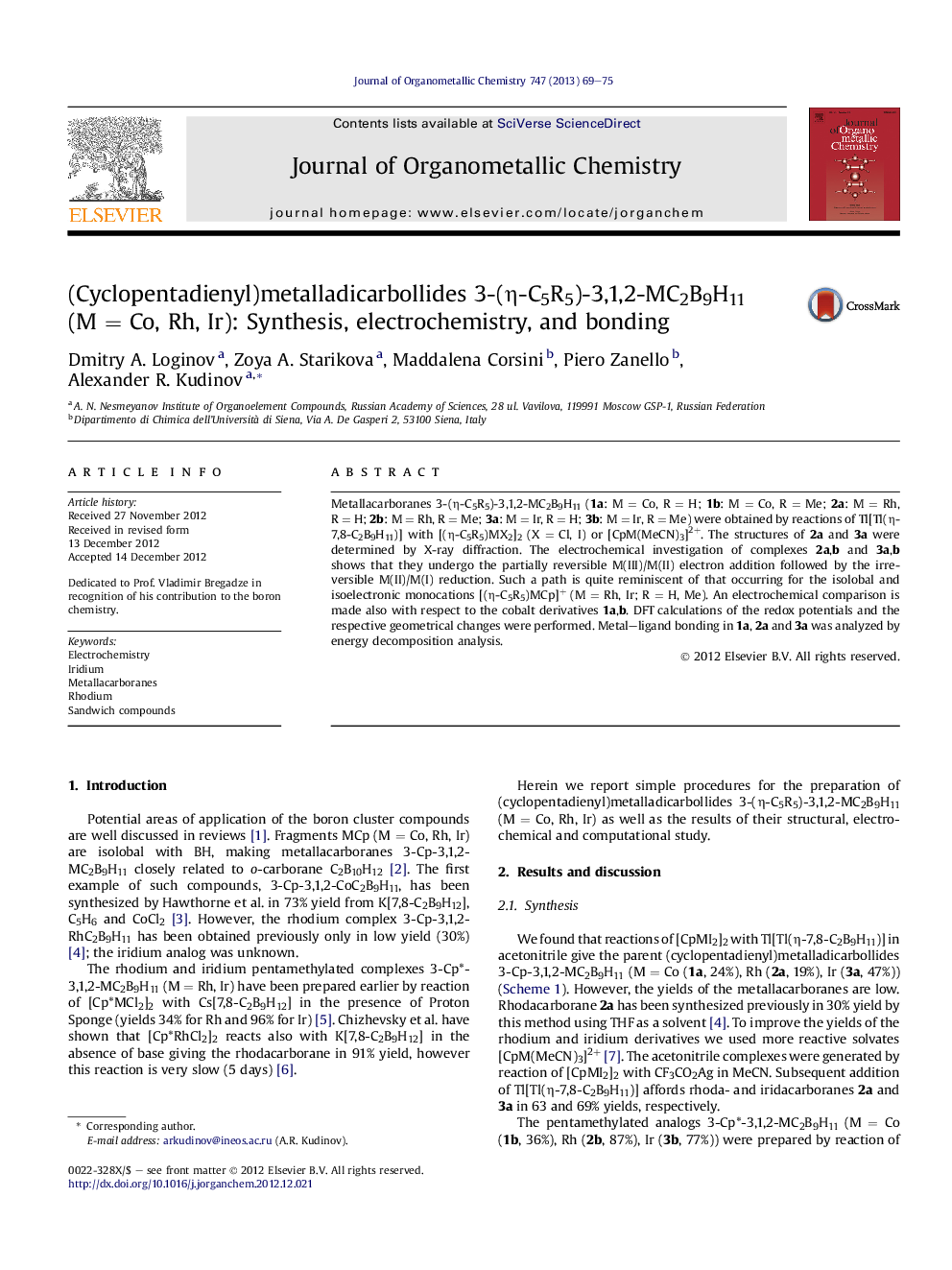| Article ID | Journal | Published Year | Pages | File Type |
|---|---|---|---|---|
| 1323671 | Journal of Organometallic Chemistry | 2013 | 7 Pages |
Metallacarboranes 3-(η-C5R5)-3,1,2-MC2B9H11 (1a: M = Co, R = H; 1b: M = Co, R = Me; 2a: M = Rh, R = H; 2b: M = Rh, R = Me; 3a: M = Ir, R = H; 3b: M = Ir, R = Me) were obtained by reactions of Tl[Tl(η-7,8-C2B9H11)] with [(η-C5R5)MX2]2 (X = Cl, I) or [CpM(MeCN)3]2+. The structures of 2a and 3a were determined by X-ray diffraction. The electrochemical investigation of complexes 2a,b and 3a,b shows that they undergo the partially reversible M(III)/M(II) electron addition followed by the irreversible M(II)/M(I) reduction. Such a path is quite reminiscent of that occurring for the isolobal and isoelectronic monocations [(η-C5R5)MCp]+ (M = Rh, Ir; R = H, Me). An electrochemical comparison is made also with respect to the cobalt derivatives 1a,b. DFT calculations of the redox potentials and the respective geometrical changes were performed. Metal–ligand bonding in 1a, 2a and 3a was analyzed by energy decomposition analysis.
Graphical abstractComplexes 3-Cp-3,1,2-MC2B9H11 (M = Co, Rh, Ir) were obtained by reactions of Tl[Tl(η-7,8-C2B9H11)] with [CpMI2]2 or [CpM(MeCN)3]2+. The results of structural, electrochemical and theoretical studies are also discussed.Figure optionsDownload full-size imageDownload as PowerPoint slideHighlights► Synthesis of 3-(η-C5R5)-3,1,2-MC2B9H11 (M = Co, Rh, Ir) was improved. ► The first reduction of the rhoda- and iridadicarbollides results in the cleavage of the cage C–C bond. ► DFT calculations revealed that the bonding of the metal atom with dicarbollide anion is much stronger than with Cp−.
